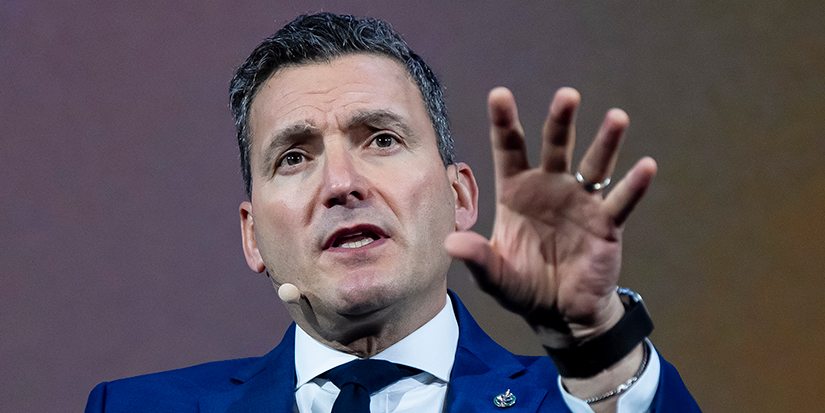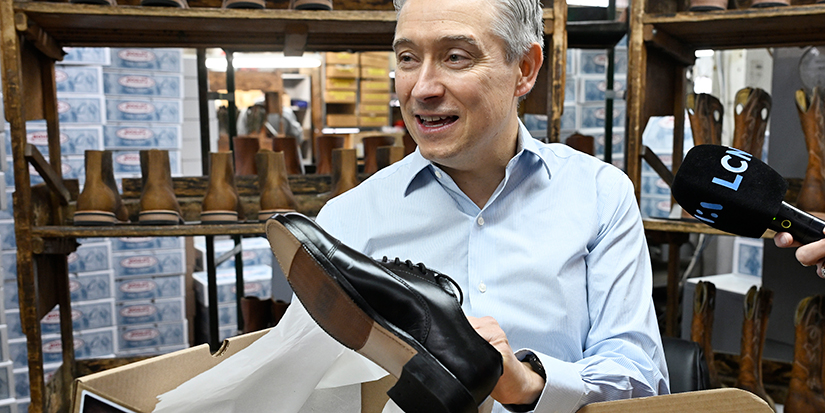Latest News
100 years: Charles M. Schulz and Charlie Brown

By Jim Gordon and Leeta Liepins
Published 2:15 PST, Fri November 10, 2023
—
The Charles M. Schulz Museum and Research Center celebrates the art of cartoonist Charles M. Schulz, creator of Charlie Brown, Snoopy, and the rest of the Peanuts gang. The Museum features the largest collection of original Peanuts comic strips in the world and presents changing exhibitions and programming for all ages.
On display are: the original Peanuts artwork, you can learn about the art of cartooning and Schulz’s role in its development, view a re-creation of Schulz’s art studio, watch Peanuts animated specials in the theater, and draw your own cartoons in the hands-on education room.
Benjamin L Clark is an author and the curator at the Charles M. Schulz Museum and Research Centre, located in Santa Rosa, California. His most recent book, in which he co-authored, is Charles M. Schulz, the Art and life of the Peanuts Creator in 100 Objects.
OCT: So many people, including us, have been big fans of Peanuts and Charlie Brown, and the man, Charles Schulz, since we were children. Let’s talk about your book and the hundred objects. We have been to your museum in Santa Rosa and experienced the history firsthand. How did you manage to whittle the objects down to just 100 in order to describe the life of Charles Schulz?
BLC: We settled on 100 as a number to publish the book in time for the centennial of Schulz’s birth, which is why it is 100 and not 200 or 50. Once we settled on a number, there were some things that just easily sprung to mind so we immediately started making that list. We have to have this, and we have to have that and with those constraints we could look at the list and see what we are missing. We wanted to get a picture of the whole man and not just the cartoonist. We thought, what are some areas that we need to touch upon? So, then we started looking for objects to represent different parts of his life and that’s how it all came together.
OCT: There were some items out of the hundred chosen that really stood out. One was when he was a young lad growing up in Minnesota, his mother gave him a How to Draw Cartoons book. And if there was one item, that if you had to choose to put a spotlight on, was what he did with integration and the introduction of the African American character Franklin. You often find great artists coming up against it, but he was not going to back down from that. Explain and describe his first brush with integration.
BLC: It was in the summer of 1968, he got a letter from a woman named Harriet Glickman, who actually wrote to several cartoonists and said things are bad right now. If you think back to that time in 1968 where there was so much racial strife in America and things were boiling over, we had the assassination of Dr. King. Harriet wrote to these cartoonists and basically said if you were to include a black character who is just a normal character, not one of these awful stereotypes that we’ve seen on the comic pages in the olden days, I think this would do a lot of good in the world.
Charles Schulz was very thoughtful about that, and he wrote back to her and said “I have considered this before, I just don’t know how I could do it. I’m not confident I can pull it off in a way that wouldn’t come across as patronizing”. He just wasn’t sure, but he opened the dialogue with her, and she asked, “can I have a couple of my friends write to you as well”.
She was Jewish and white, but she had some other people write to him who were black and were able to express to him, that they believed he had created so much goodwill in the world. Even if what you do comes across imperfectly, isn’t it worth trying? And that cemented it for Charles Schulz, and it allowed him to be able to create this character and to give himself the latitude and self-permission to say, “I may not get it 100 per cent right out of the gate but I’m going to try”. I think that is an important lesson to come away with.
OCT: I love the fact that he didn’t back down. There was some pushback from newspapers in various parts of the country, but he stood his ground. It’s amazing too that he starts in the early 1950s in seven newspapers and by the time he passes away at a young age in 2000, he’s in 2600 papers. We’d like to think that he is one of a kind.
BLC: There is hardly anyone working in not just comics, but in any graphic form today, that doesn’t point back to Charles Schulz’s influence.
OCT: What’s great too is that you have these hundred items and you also have commentary from his family, friends and the worshipping of many cartoonists. Tell us a little bit about the museum and why visitors should make the trek if they’re in the neighbourhood.
BLC: We have a beautiful museum and a constantly rotating exhibition. There’s always something new to see even if you have been before. We are in Santa Rosa right in the heart of California’s beautiful wine country and not too far from the coast. It is a beautiful place to visit, aside from just coming to see us at the Schulz Museum.
To watch the video interview in full go to richmondsentinel.ca/videos, for more information go to schulzmuseum.org.































